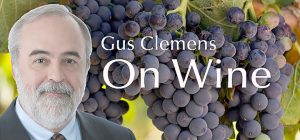The wine world divides into two camps: factory wines and distinct wines. That artificial division is black and white while the wine world is grey; it is simplistic and annoys those who recognize nuance. But the paradigm works in broad stroke terms. Let’s explore.
People drink wine for a cacophony of reasons. Weekend pleasure. Midweek indulgence. Social lubricant at a function. Means to clutch the next rung on a social ladder.
When we buy wine, we confront an existential fork in the wine road. Factory wine—made in the millions to sate a specific, focus-group-determined wine profile. Find it in your grocery store. Not spectacular, but usually dead-center-perfect for what you expect.
Or you can secure a distinct, non-factory wine seldom carried in grocery stores. When you find it, pull the cork to see what you got.
Factory wine is security. Predictable. Readily available. Reasonably priced, sort of.
Non-factory wine is none of those things—although reasonable pricing can sneak in, especially with Southern Hemisphere wines. Non-factory wines often are the product of relatively small acreage and the toil of a family, often for generations, especially in the Old World.
Factory wines promise you predictable, market-tested flavors. Non-factory wines offer you adventure and the chance to soar above the clouds while the factory wines are flapping their wings to clear the tree tops.
This column is not some despairing ramble. There are mega-wineries that have divisions producing extraordinary, terroir-driven, vintage-correct wines. Bravo Gallo, Constellation, The Wine Group, Treasury Wine Estate, and Viña Concha y Toro. But each of them also produces a vast lake of factory wines. This is how they got to be among the world’s largest winemakers.
I enjoy factory wines. I review them favorably for what they are. “Delicious” and “easy drinking” are descriptors I often use.
And, then, there are the distinct wines. Often relatively small production by multi-generations of wine makers, but there are examples from divisions of mega-wineries, too. Distinct wines taste the place—terroir. They may have marginal imperfections—if art is perfect, it is bland. Pull cork and embrace surprise on the palate. Adventure is one big reason wine is wonderful.
Tasting notes
• Symington Family Estates Quinta da Fonte Souto Portalegre Branco, Alentejo DOC 2020: rich with pleasing depth. Round, smooth, impressive length. $18-25 Link to my review
• Bonterra The McNab, McNab Ranch Vineyard, Mendocino County 2020: bold, smooth, approachable. Flagship of organic and biodynamic-focused Bonterra. $52-60 Link to my review
Last round: I told my doctor I hurt my hand opening French sparkling wine. He told me it was only sham pain.

